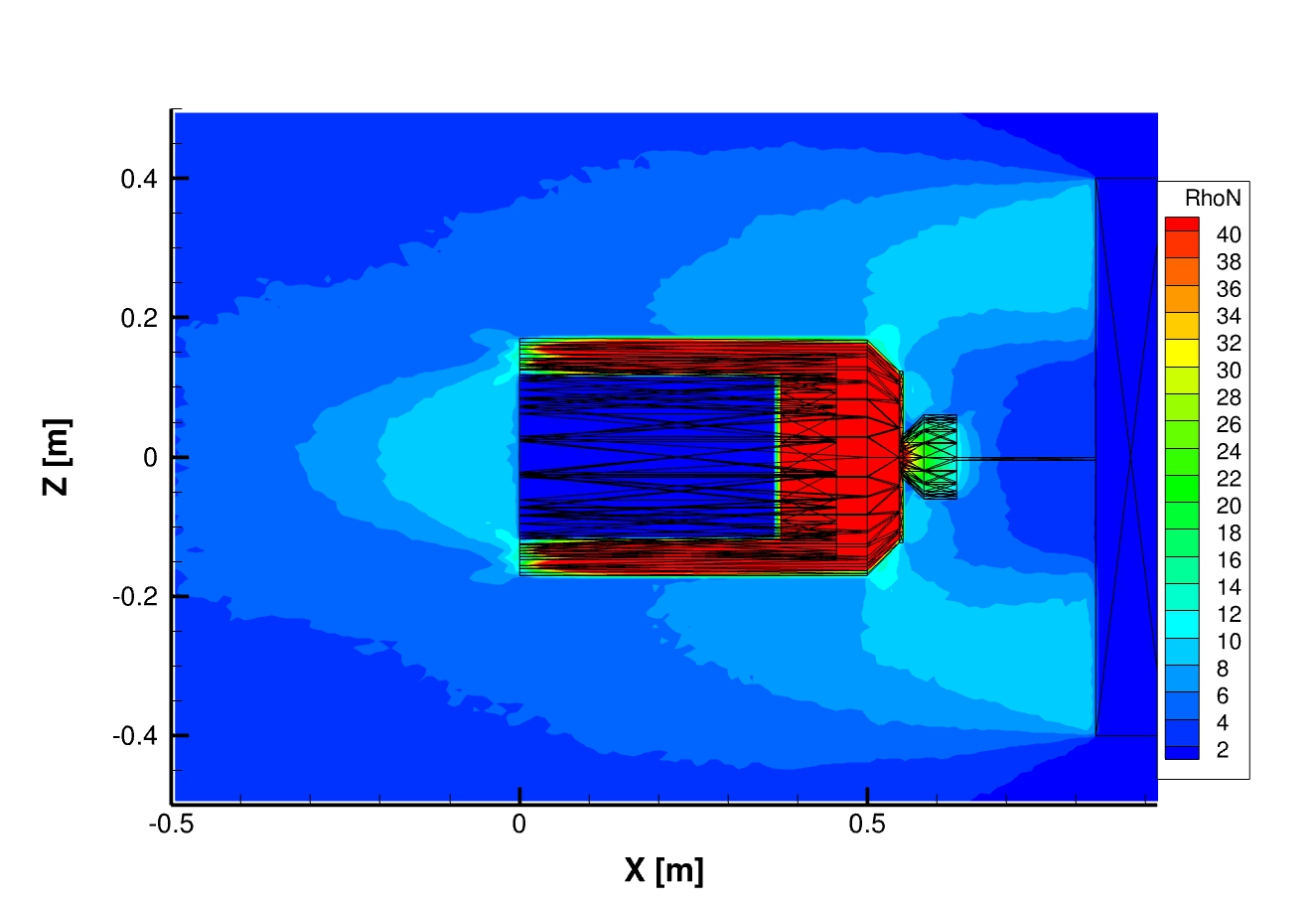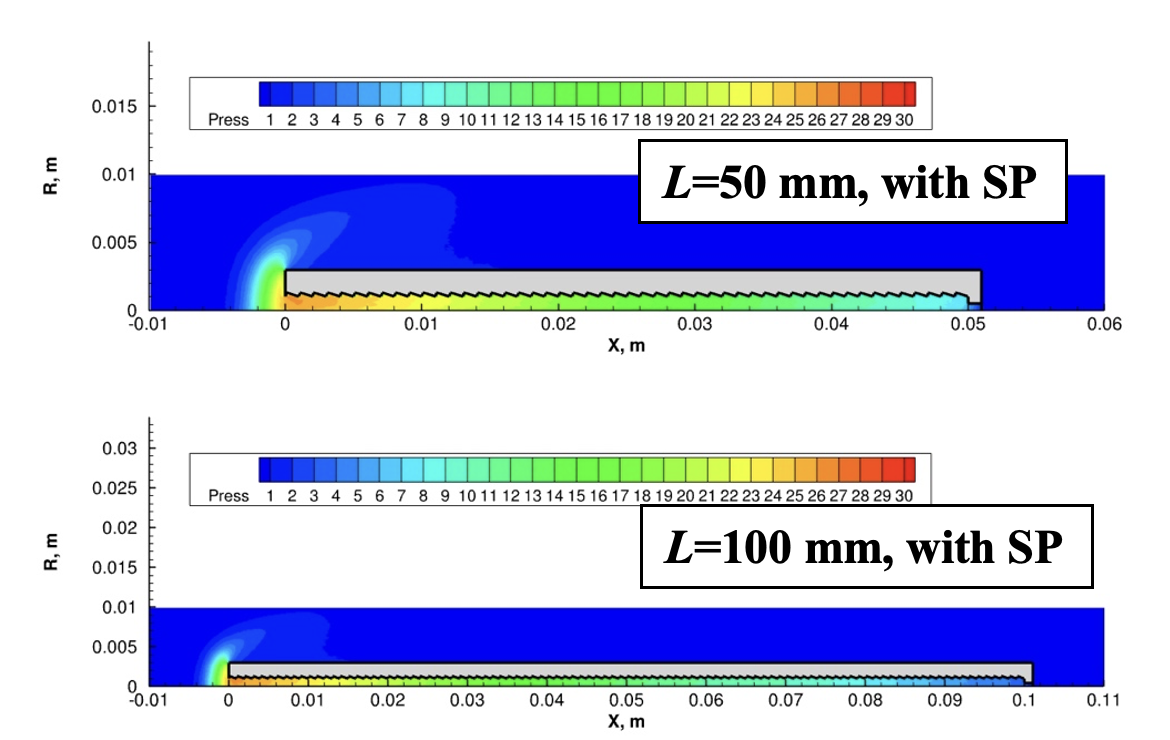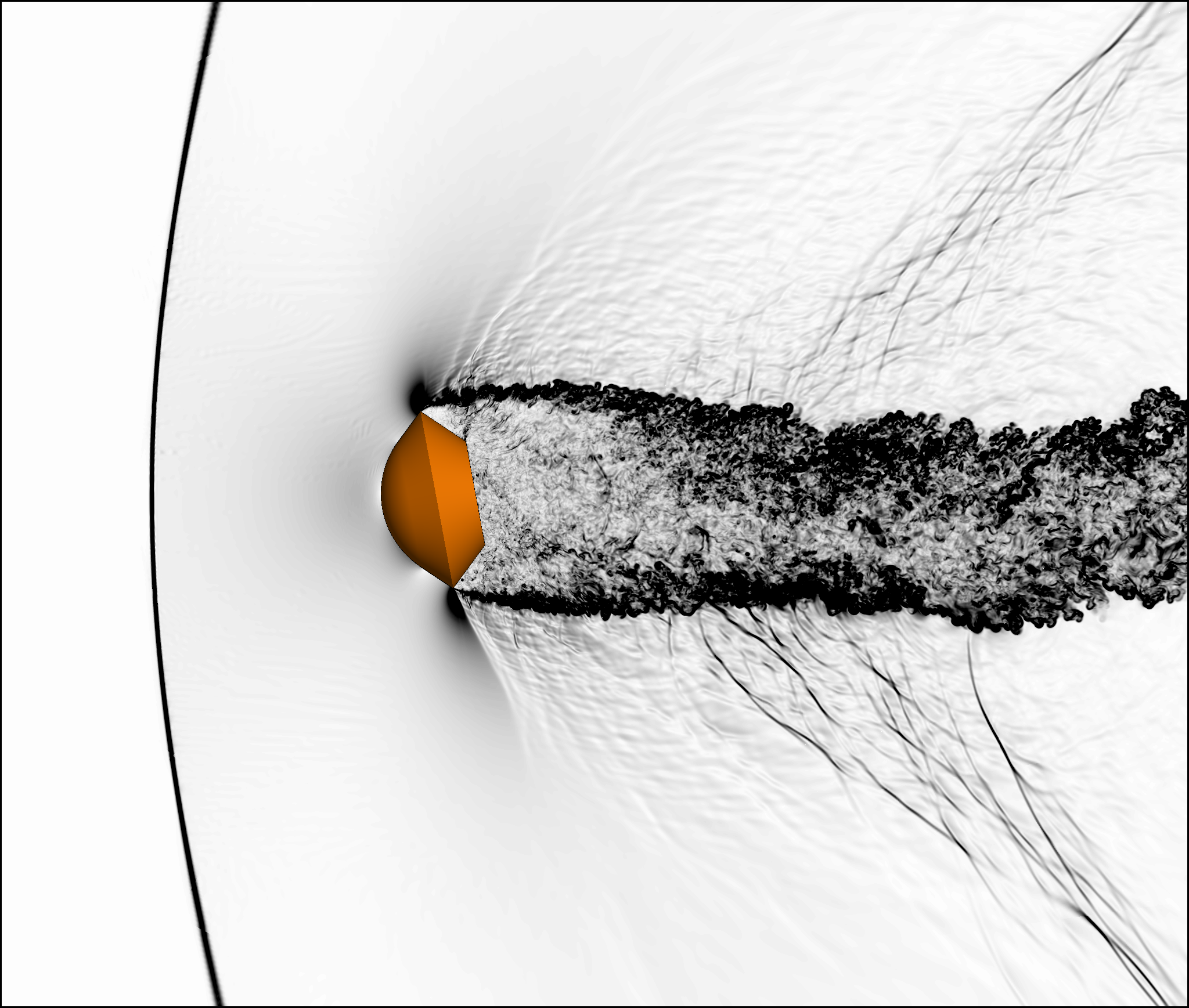Analyses of Thermoaerodynamics during Atmospheric Entries and of laminar-turbulent transition
JAXA Supercomputer System Annual Report February 2024-January 2025
Report Number: R24EDA201A32
Subject Category: Aeronautical Technology
- Responsible Representative: Naoko Tokugawa, Aviation Technology Directorate, Fundamental Aeronautics Research Unit
- Contact Information: Takashi Ozawa(ozawa.takashi@jaxa.jp)
- Members: Yuki Ide, Shingo Matsuyama, Takashi Ozawa, Toshiyuki Suzuki
Abstract
In this study, we try to enhance physical models for high temperature gas and numerical simulation method to accurately predict heating and aerodynamic characteristics at atmospheric entry. We aim to develop high fidelity simulation tool by demonstrating improvement of prediction accuracy by comparing experimental data and simulation results with the newly proposed model and method. In this year, we focus on the analysis of hypersonic flows inside a light-gas-gun and around capsules, attitude instability analysis for sample return capsules in addition to rarefied gas dynamics. Additionally, numerical prediction tools for laminar-turbulent transition in hypersonic boundary layers are developed.
Reference URL
N/A
Reasons and benefits of using JAXA Supercomputer System
In order to evaluate uncertainties and dependence on nonequilibrium thermochemical models, configurations, and freestream conditions, supercomputer has been used to perform a large number of CFD and DSMC runs by changing physical models, configurations, and flow conditions.
Achievements of the Year
In this study, we first clarified the behaviour of wave packets in a wake behind a cylindrical roughness element and secondary transient growth in crossflow-vortices-dominated flows by carrying out stability analyses for boundary layers.
Second, we carried out DSMC computations to study intake performance (see Fig. 1) for air breathing ion engine (ABIE).
In addition, because the effect of micro-structured surfaces on aerodynamics and pressure is not well-known in rarefied flow regime, we conducted DSMC computations to study configuration dependence (see Fig. 2) in order to design models for hypersonic rarefied wind tunnel.
Finally, to clarify the mechanism of dynamic instability of atmospheric entry capsules in transonic speed region, LES analysis of the “Hayabusa” capsule flying at Mach 1.1 was performed by LES (see Fig. 3). The mechanism of dynamic instability caused by capsule wake oscillation was investigated from the LES results.

Fig.1: Distribution of density compression ratio inside and around a intake in a very low earth orbit

Fig.2: Comparison of pressure distributions inside tube-type models with micro-structured surfaces between 50 and 100 mm in length

Fig.3: LES of oscillatory motion of the Hayabusa capsule flying at Mach 1.1 due to dynamic instability
Publications
- Oral Presentations
33rd International Symposium on Rarefied Gas Dynamics
38th CFD Symposium
The Japan Society for Aeronautical and Space Sciences Western Branch
68th Space Science and Technology Conference
Usage of JSS
Computational Information
- Process Parallelization Methods: MPI
- Thread Parallelization Methods: OpenMP
- Number of Processes: 366 - 2928
- Elapsed Time per Case: 24 Hour(s)
JSS3 Resources Used
Fraction of Usage in Total Resources*1(%): 0.81
Details
Please refer to System Configuration of JSS3 for the system configuration and major specifications of JSS3.
| System Name | CPU Resources Used(Core x Hours) | Fraction of Usage*2(%) |
|---|---|---|
| TOKI-SORA | 20904105.37 | 0.96 |
| TOKI-ST | 309282.29 | 0.32 |
| TOKI-GP | 0.00 | 0.00 |
| TOKI-XM | 0.00 | 0.00 |
| TOKI-LM | 0.00 | 0.00 |
| TOKI-TST | 0.00 | 0.00 |
| TOKI-TGP | 0.00 | 0.00 |
| TOKI-TLM | 0.00 | 0.00 |
| File System Name | Storage Assigned(GiB) | Fraction of Usage*2(%) |
|---|---|---|
| /home | 1171.00 | 0.79 |
| /data and /data2 | 109377.43 | 0.52 |
| /ssd | 30971.00 | 1.66 |
| Archiver Name | Storage Used(TiB) | Fraction of Usage*2(%) |
|---|---|---|
| J-SPACE | 2.76 | 0.01 |
*1: Fraction of Usage in Total Resources: Weighted average of three resource types (Computing, File System, and Archiver).
*2: Fraction of Usage:Percentage of usage relative to each resource used in one year.
ISV Software Licenses Used
| ISV Software Licenses Used(Hours) | Fraction of Usage*2(%) | |
|---|---|---|
| ISV Software Licenses(Total) | 0.00 | 0.00 |
*2: Fraction of Usage:Percentage of usage relative to each resource used in one year.
JAXA Supercomputer System Annual Report February 2024-January 2025


